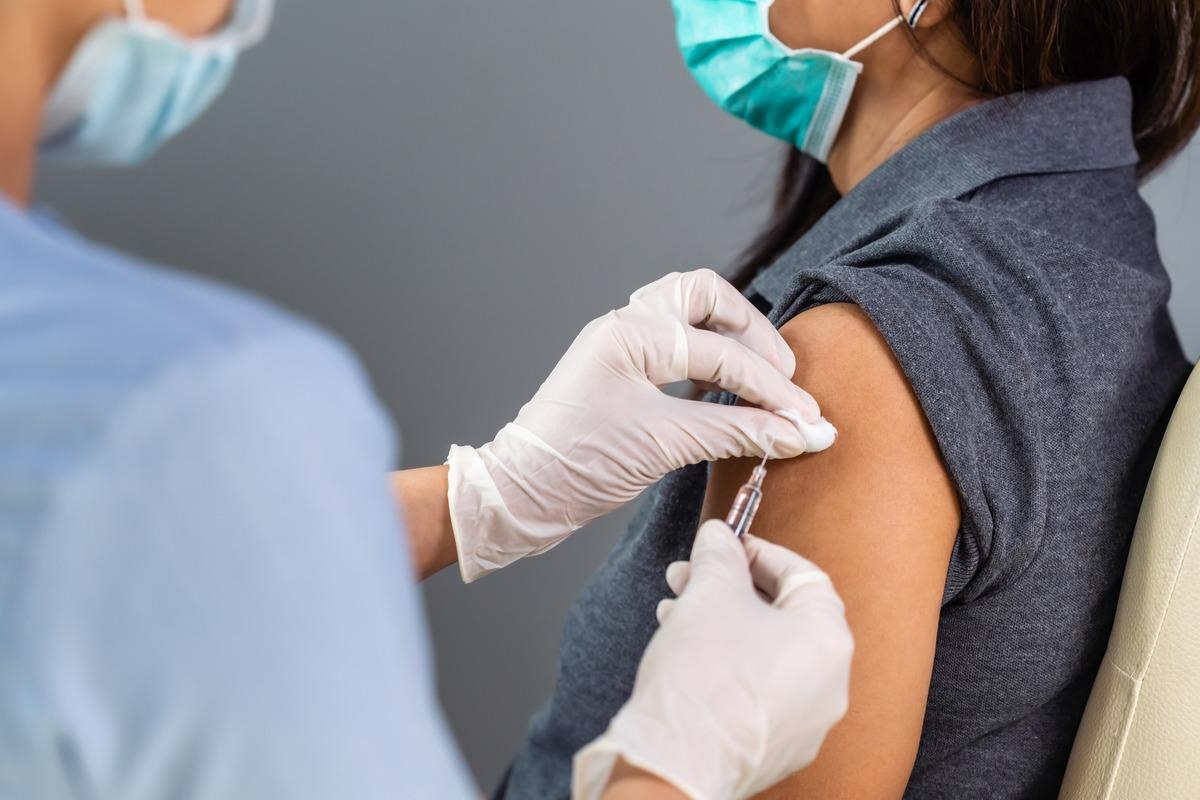In a recent study posted to the medRxiv* preprint server, researchers assessed the impact of BNT162b2 coronavirus disease 2019 (COVID-19) vaccination on antibody acquisition.

Severe acute respiratory syndrome coronavirus 2 (SARS-CoV-2) vaccines have been instrumental in protecting the elderly populations against COVID-19 severity, related hospitalization, and death. However, extensive research is required to understand the impact of vaccination on humoral responses across the general population.
About the study
In the present study, researchers investigated the influence of age and gender on antibody acquisition up to one month after administration of one or two doses of the BNT162b2 vaccine.
The team combined data recorded in two COVID-19 vaccination cohort studies focused on adolescents and adults aged between 12 to 60 years and on elderly individuals aged 50 years and above. The eligible participants had either planned to receive the COVID-19 vaccine or had received their primary vaccination regime within the previous 28 days.
The team collected blood samples at four distinct time points: (1) Pre-vaccination sample taken before the COVID-19 vaccination; (2) Dose 1 sample taken 28 days post-first vaccination; (3) Dose 2 sample taken 28 days post-second vaccination; and (4) Month 3 samples taken three months post-second vaccination. Questionnaires answered by the participants included questions related to demographic data, COVID-19 vaccine received, and SARS-CoV-2 testing.
Furthermore, the researchers evaluated the total immunoglobulin (IgG) antibody concentrations against the SARS-CoV-2 spike (S) protein and the nucleoprotein (N) via a bead-based assay.
Results
The study included 1735 participants who were vaccinated with the BNT162 COVID-19 vaccine. The team obtained a total of 1,377 measurements performed pre-vaccination, 1,429 at dose 1, 1425 at dose 2, and 694 at month 3. It was noted that the number of pre-vaccination measurements for the elderly population was low since the vaccines were made available to the elder populations before the younger adults.
Across the study population, 60% of the participants were female, while the duration between two vaccine doses was almost 35 days for all age groups. Moreover, 20% of the participants aged between 20 and 59 years, 12% between 12 and 19 years, 5% between 60 and 79 years, and 0% aged 80 years and above reported a history of SARS-CoV-2 infection before vaccination.
The study results showed seropositivity of 97% at dose 1 among infection-naive individuals and 100% among those who had a history of infection before receiving a COVID-19 vaccine. On the other hand, they observed seropositivity of 100% at dose 2 across all age groups irrespective of infection history. Moreover, the S1 IgG in infection-naive persons increased from 0 binding antibody units per mL (BAU/mL) pre-vaccination and 146 BAU/mL at dose 1 to 1842 BAU/mL at dose 2. Notably, S1 IgG levels in persons who had a history of previous COVID-19 infection before vaccination improved from 73 BAU/ml pre-vaccination and 3293 BAU/ml at dose 1 to 4535 BAU/ml at dose 2. This indicated that the individuals with previous COVID-19 infection had higher S1 IgG levels than those in infection-naïve persons at all the time points.
Furthermore, the S1 IgG levels induced after BNT162b2 vaccination declined in concentration with age, with the highest concentrations observed in individuals aged between 12 and 19 years. The team also noted a decrease in IgG levels per age decade to a concentration of 45 and 672 BAU/mL for doses 1 and 2 in the age group of 18 to 92 years, respectively. A strong negative correlation was also observed between IgG levels and age at doses 1 and 2. However, the strength of this correlation also decreased between the two doses, suggesting that there was higher antibody acquisition with increasing age. Moreover, a greater fold-change was observed between the first two doses due to the lower amounts of S1 IgG at dose 1.
The team also found that the median S1 IgG levels reduced from 1304 BAU/mL at dose 2 to 440 BAU/mL at month 3 among the infection-naive individuals, while all the participants in this cohort showed seropositivity at month 3. However, the strength of the negative correlation between S1 IgG levels and age was lower at month 3 than at dose 2 which indicated the dampened antibody decay with increasing age. Moreover, a greater fold-change was observed between the first and the third month after the second vaccination.
Conclusion
Overall, the study findings showed a strong negative correlation between age and S1 IgG levels induced by BNT162b2 vaccination. The researchers also highlighted the importance of high concentrations of neutralizing SARS-CoV-2 antibodies to combat disease severity and related hospitalization.
*Important notice
medRxiv publishes preliminary scientific reports that are not peer-reviewed and, therefore, should not be regarded as conclusive, guide clinical practice/health-related behavior, or treated as established information.
-
Reduced antibody acquisition with increasing age following vaccination with BNT162b2: results from a large study performed in the general population aged 12 to 92 years. Lotus Leonie van den Hoogen, et al. medRxiv. doi: https://doi.org/10.1101/2022.05.18.22275209 https://www.medrxiv.org/content/10.1101/2022.05.18.22275209v1
Posted in: Medical Science News | Medical Research News | Disease/Infection News
Tags: Adolescents, Antibodies, Antibody, Assay, Blood, Coronavirus, Coronavirus Disease COVID-19, covid-19, Immunoglobulin, Protein, Research, Respiratory, SARS, SARS-CoV-2, Severe Acute Respiratory, Severe Acute Respiratory Syndrome, Syndrome, Vaccine

Written by
Bhavana Kunkalikar
Bhavana Kunkalikar is a medical writer based in Goa, India. Her academic background is in Pharmaceutical sciences and she holds a Bachelor's degree in Pharmacy. Her educational background allowed her to foster an interest in anatomical and physiological sciences. Her college project work based on ‘The manifestations and causes of sickle cell anemia’ formed the stepping stone to a life-long fascination with human pathophysiology.
Source: Read Full Article